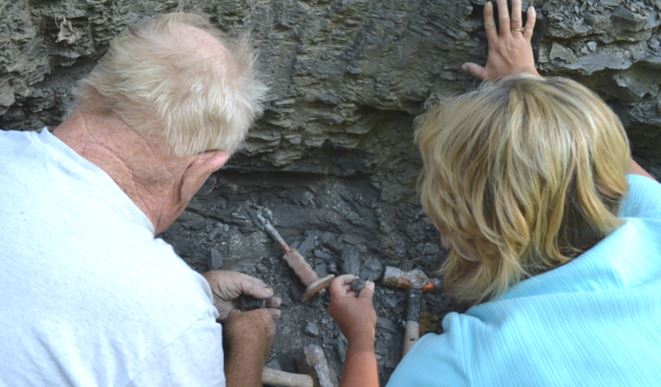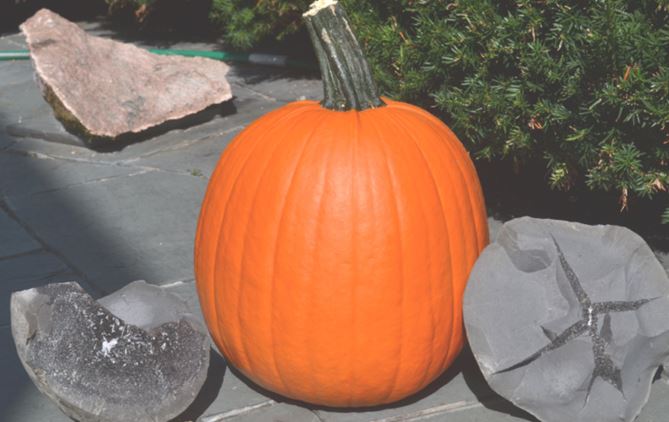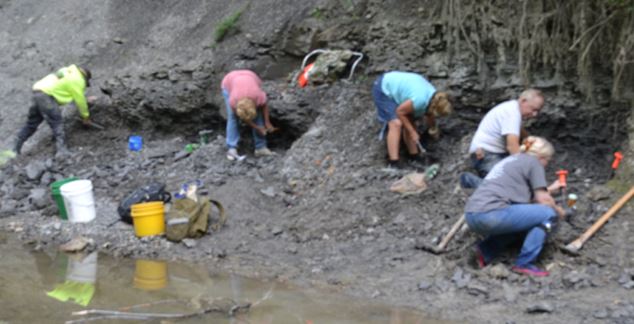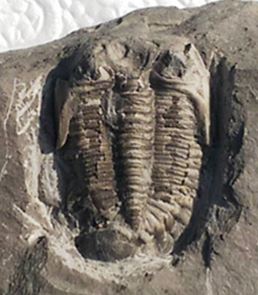Having been rained and flooded out in June, the WCGMC found a way to squeeze a trip Alden into its August schedule visiting the ever popular site on Saturday August 29th. This time the weather was perfect, the water was low, and, as always the fossils were there to be collected. The formidable Ledyard shale cliffs in the creek bed have been a favorite site for collectors for several decades, but winter erosion always seems to expose new ones to extract with a little digging.
The primary attraction to this location is the unit about three feet above creek level where ammonites, cephalopods, and even an occasional trilobite have been pyritized and where pyrite nodules up to an inch in diameter can be extracted. Have you ever seen five collectors as engrossed as those caught in action in the featured image for this post ? They must be finding something!

Although the pyritized fossils unique to Alden attract many collectors there is nothing better than finding a complete trilobite. Note the cephalon spines of this Greenops boothi collected by Michael Watkins. There is a hint of pyrite to a portion of his shell, but mineralization is only partial.


A sidelight to the interesting fossil assemblage and pyritization at Alden are the abundant concretions or nodules that are weathering out of the cliff walls. Most lie unbroken in the creek floor, but one relatively large concretion had broken (or been broken) exposing internal cracks which had filled with fine grained black crystalline calcite and a small amount of white selenite. Notice in the picture below that the cracks are internal and do not extend to the nodule’s surface. This style of concretion is called a septarian nodule and their origin is somewhat enigmatic.

For more on Alden visit http://fredmhaynes.com/2014/06/10/spring-creek-in-alden-ny/

